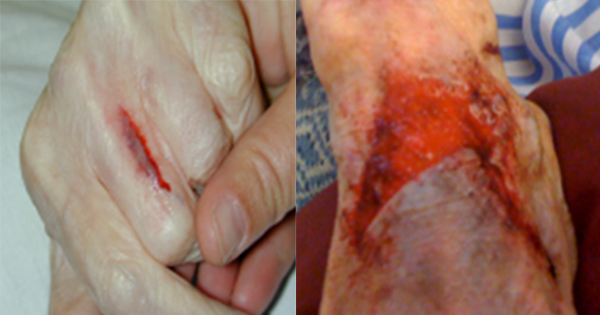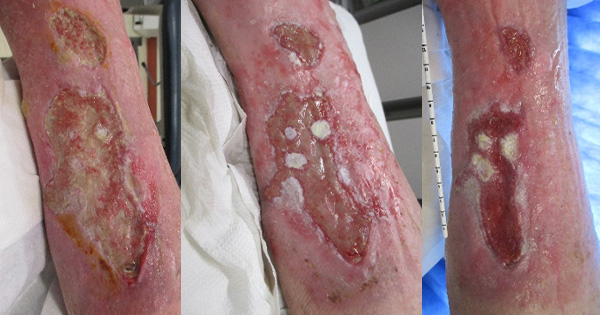Skin tears are traumatic wounds that may result from a variety of mechanical forces such as shearing or frictional forces, including blunt trauma, falls, poor handling, equipment injury or removal of adherent dressings.
In fragile or vulnerable skin (e.g. in aged or very young skin), less force is required to cause a traumatic injury. The ageing of the worldwide population means that incidence of skin tears is increasing (Le Blanc et al, 2018).
Skin tears are a significant problem that require prompt and appropriate management and treatment. They can be painful, affect quality of life and cause distress to the patient. As skin tears are frequently underreported or misdiagnosed, the full extent of the practical and financial burden to healthcare systems is not fully known.
Skin tears are often preventable wounds that create avoidable cost and patient discomfort and pain, so prevention and management in practice are of key importance. If a patient develops a skin tear, a risk assessment should be completed according to local policy, to highlight future risks and how to prevent them from reoccurring.
Severity of skin tears can vary, and can be identified and classified using the ISTAP Classification System (Le Blanc et al, 2013).







